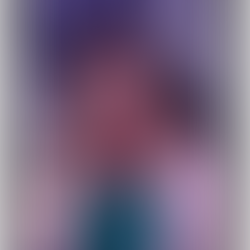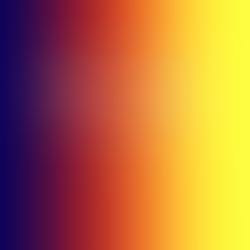How Do the Use of Visuals, Colors, and Design Increase the Effectiveness of Ads?
- Lilli Jennison
- Oct 6, 2020
- 11 min read
Abstract
This study explains how colors, shapes, and logos affect customers. This topic is important because so much money is spent on graphic design, advertisement development, and other aspects of advertisements and it is important to see if these advertisements are working. Colors, design, and logos have a big impact on purchases and how consumers perceive brands. Findings showed people don’t look to advertisements to persuade their purchases. future research needs to be done to see how advertisements can sell products better.
Key Words: colors, shapes, logos, design, graphics, advertisements, effectiveness, brands, consumers.
How Do the Use of Visuals, Colors, and Design Increase the Effectiveness of Advertisements in Influencing Consumers?
Introduction
This study is to find out if colors, shapes, and logos effect customers purchasing decisions. Visuals, colors and designs have a big impact on purchases and how consumers perceive brands. A survey was conducted and sent out via Facebook, D2L, and GROUPME. 36 participants responded back. In this literature paper, I will explain how colors, shapes, and logos effect customers. I will also write about how colors and logos change through the years to keep up with modern times. I believe colors and designs have a big impact on purchases and how consumers perceive brands.
Literature Review
When looking at the value of color in advertising, we want to know if the advertisement will sell a product. Some advertisers want to create a link in the consumer’s brain between the product and the name (Warner & Franzen, 1947). One experiment was a man was given advertisements and was then asked random questions to get his mind off the advertisements. He was then given a list of products and asked which he would prefer. This experiment was supposed to mimic a real-life situation where you look at advertisements and later at the store see which items you would like to purchase. Warner and Franzen (1947) explain the experiment would have worked better if the viewing of the advertisements were "spontaneous rather than requested.”
Warner's and Franzen's (1947) study had one black and white advertisement for every color advertisement. Both the black and white and the color were the same product but with different names. They were measured in how interested the participant was with the advertisement. Findings show that "color appears to have a greater advantage over black and white."
The leading advertising outlet for small businesses in 1991 were the yellow pages. Kelly and Hoel (1991) explained "the impact of size, color, and copy quantity on yellow page advertising effectiveness." Kelly and Hoel (1991) concluded that "yellow page advertisements containing color are more effective than those using only black ink."
Müller, Kocher, and Crettaz (2013) investigated effects of logos and brand modernity with brand loyalty. Müller, Kocher, and Crettaz (2013) compare a brand's lifecycle with the human lifecycle. The brand is born at the launch date, grows up and changes a little, potentially gets married, which symbolizes mergers, has babies, which symbolizes extensions, gets older and one day dies. One way to overcome hard times in these brands is to re-brand and change elements like logos (Müller, Kocher, & Crettaz, 2013). Companies will update their logos to make them look more modern. According to Müller, Kocher, and Crettaz (2013), "logos are one of the main instruments to communicate image, gain attention, increase recognition and differentiation of the brand as well as means of provoking an emotional response."
The experiment that Müller, Kocher, and Crettaz (2013) performed was to measure whether people preferred new or old logos better and whether the new logos looked more modern. According to Müller, Kocher, and Crettaz (2013), "the results show higher brand modernity when respondents evaluate the new logo rather than the old version." Müller, Kocher, and Crettaz (2013) explain that types of logos do not effect brand attitude although modern logos make the company seem more modern. Müller, Kocher, and Crettaz (2013) say "logos provide instant recognition for the brand."
Reinartz’s and Saffert's (2013) research gears towards how creativity plays a role in advertisements. The findings were that the advertisements the participants deemed creative were of products that had double the sales impact of the noncreative advertisements. Reinartz and Saffer (2013) suggested future experiments to measure creativity and advertisement effectiveness. They suggested using "a survey approach to estimate the impact of particular creative choices (Reinartz & Saffert, 2013)."
Panigyrakis's and Kyrousi's (2015) research is a review of colors in advertising from the years 1985-2012. They express the value of colors in advertising. Colors are vibrant and can have psychological meanings behind them. It is important to choose the correct colors for advertisements so they send the right message. Colors can be described as hue, value, and saturation. Panigyrakis and Kyrousi (2015) explain that they believe "the most important problems in determining the effect of color on attention is the measurement of attention per se." They explain that most experiments on attention are done via memory even though memory has been proven to be not helpful in measuring attention (Panigyrakis & Kyrousi, 2015). Panigyrakis and Kyrousi (2015) suggest a good way to test attention to colors in advertising is using eye-tracker equipment. This would track where the participant's eye is drawn and how long it stays on one spot. Although the drawback with eye tracking technology was black and white advertisements showed similar results to color advertisements. There may also be a link between colors and memory. Different hues may be more memorable than others, according to Panigyrakis and Kyrousi (2015). There is also a link between colors and emotions. It is widely known that blue can be sad or calm. This theory is often used in advertising. Panigyrakis and Kyrousi (2015) conclude by explaining that more research on this subject needs to be done.
Negm and Tantawi (2015) investigate "the impact of visual design on consumers' perceptions towards advertising." Negem and Tantawi (2015) suggest that "advertisements educate people about the available substances in the market." Not all advertisements attract the views of consumers. Visual design is very important in advertisements to help catch a consumer's eye (Negm & Tantawi, 2015). Negm and Tantawi (2015) found that "visual imagery has an important role to play in advertising effectiveness." Negem and Tantawi (2015) explain that the use of visuals can portray complex ideas easier and quicker.
Moriarty (2016) talks about how visuals are used in print media to make the audience pay attention and to spark interest in the advertisement. Moriarty (2016) states that beyond sparking interest, "we don’t know much about how visuals work or the functions they perform." In this analysis, Moriarty analyzes the functions of visuals, how they are used, and how they are effective. Moriarty (2016) states that there are two categories for visuals in advertising: illustration and photography. The functions of visuals are grouped into groups as well. They are: Literal and symbolic. Literal visuals are broken down into sub categories: identification, description, comparison, and demonstration. Identification is "brand, logo, [and] package (Moriarty, 2016)." Description is "what it looks like, attributes, parts, [and] schematics (Moriarty, 2016)." Comparison is "between two competitors, before and after (Moriarty, 2016)." Finally, demonstration is "how to use, apply, [and] make (Moriarty, 2016)." On the other hand, symbolic visuals are broken down in association, which is "lifestyle, [and] typical person situation (Moriarty, 2016)," "association using a character or celebrity (Moriarty, 2016)," metaphor which is "allegorical use (Moriarty, 2016)," storytelling which is "narrative, drama, [and] playlet (Moriarty, 2016)," and aesthetics which are "details [that] become art, pattern, [and] abstraction (Moriarty, 2016)." Literal visuals are more direct and factual while symbolic visuals are more abstract and can hold assigned meanings, says Moriarty (2016). Car ads will use more descriptive visuals to show how the car looks in the advertisement (Moriarty, 2016). Infomercials may use comparison visuals to show before and after photos. Moriarty (2016) explains, "Awareness… is measured by recognition, or identification, of such factors as brand name, slogan, logo or package."
Moriarty's (2016) study uses a mixture of 222 magazine advertisements to measure effectiveness and frequency of use of the basic visual functions. The study found that most advertisements from the 222 sampled were photographs and "52% [were] symbolic visuals (Moriarty, 2016)." With regards to the seen score for the literal category, comparison visuals got a higher score than identification (Moriarty, 2016). "This suggests that there are different levels of visual interest that may be reflected in these scores (Moriarty, 2016)." With regards to the symbolic group, Storytelling scored a higher seen score than metaphor did (Moriarty, 2016). Moriarty (2016) explains that metaphors can be a gamble in advertising whether they do well or not. Moriarty (2016) ends with a final point that shows visuals are a major point in advertising. Moriarty (2016) explains that in "97% of the advertisements, the noted score for the ad as a whole was identical to the seen score for the visual." This suggests that "the advertisement's impact is certainly a function of the power of its visual (Moriarty, 2016)."
In conclusion, the research on visuals, colors, and design in the effectiveness in advertising is slim. There needs to be more research done on the topic. From the research I have gathered, the use of visuals, colors, logos, and design has a significant impact on advertising effectiveness. In the future, there should be more research done on logos in advertising. I have noticed an increase of logos without names of brands in them. For example, someone sees a swoosh and automatically think of Nike. In fact, Nike stores don’t even say Nike anymore they only have a graphic of the swoosh. Someone sees the Nike swoosh in an advertisement and the swoosh itself screams Nike without the use of words.
Purpose of the Study
The purpose of this study is to see if the money paid for graphic and advertisements has a good return on investment. The study should show if the use of visuals, colors, logos, and design has a significant impact on advertising effectiveness.
RQ: How Do the Use of Visuals, Colors, and Design Influence Customers?
H1: Visuals, colors and designs have a significant impact on purchases and how consumers perceive brands.
Methodology
Measures
This study used a survey for measurement. This method was designed to measure how effective colors, logos, and other design elements are in advertisements. I used Google Forms to create the survey. Survey questions are listed in Appendix B. This study is both reliable and valid. There were no ethical dilemmas therefore I did not ask for IRB approval however, I did include an informed consent at the beginning of the survey. Informed consent is listed in Appendix A.
This survey is intended to measure if the use of colors, design, and logos have an impact on purchases and how consumers perceive brands. Expectations are that colors, design, and logos have a significant impact on purchasing decisions.
Sample
I used convenience sampling and sent out the survey to my classmates through D2L email. I also sent the survey through GROUPME to members of two clubs I am in: KSU Disney Club and PRSSA. Lastly, I sent it to my friends on Facebook.
Expected demographics were a large range of cultural backgrounds. College aged students were expected to be obtained by sending the survey through D2L and GROUPME. A large range of ages and backgrounds were expected from Facebook.
Results
Results from this survey differed from the hypothesis. Since only 11.1% of respondents were male, this is not an accurate representation of how advertisements affect the male population. If this was redone, there should be a greater percentage of male respondents to make sure that the results are accurately representing the male population. The ages I gathered are mostly 30 and under with one 60-year-old. If this survey was redone, there should be a greater range of genders and ages.
Analysis and Discussion
The results do not seem to support the hypothesis. Although people appreciate the use of designs, colors, and logos, they buy products without regards to advertisements. However, almost the majority of the respondents said the more creative the advertisement, the more they want to purchase the product. I expected results to show that creativity sells. I did not expect so many “maybes” as answers. I expected results to show that people prefer colorful ads to black and white and the results were compliant with my expectations.
Limitations of the Study
There were a few limitations to this study. First, getting the sample. Since I was not offering any incentive, I was at liberty to the kindness of classmates and friends to take the survey. Another limitation I had was making sure the sample was unbiased and honestly expressed their opinions to the questions. Another limitation was due to using convenience sampling. Since this is a convenience sample, the results will not be generalizable to the public. The most significant limitation is people were self-reporting. They don’t necessarily know how or if the advertisements are affecting their decisions.
Future Research OR Call to Action
My suggestion for future research is to see how advertisements can sell products better. I noticed that people said that advertisements do not persuade their purchasing decisions. I believe different research needs to be done to fully examine the hypothesis. One idea would be an experiment. One group would be given colorful advertisements where the other would be given plain black and white times new roman advertisements. Both groups would then go shopping. This would show if the advertisements had an influence on their purchasing decisions or if my survey was correct.
Conclusion
In conclusion, this survey was successful with participation from 36 people. I sent out the survey through Facebook, D2L, and GROUPME. I used convenience sampling. Results from this survey differed from the hypothesis slightly. However, a limitation of this survey was that people may not know if advertisements affect their purchases or not. Future research needs to be done on this subject.
References
Kelly, K. J., & Hoel, R. F. (1991). The Impact of Size, Color, and Copy Quantity on Yellow Pages Advertising Effectiveness. Journal of Small Business Management, 29.4th ser., 64. Retrieved September 19, 2017, from https://search.proquest.com/openview/d88e9f29ec502456fa709b899b5d6aca/1?pq-origsite=gscholar&cbl=49244
Moriarty, S. E. (2016). A Content Analysis of Visuals Used in Print Media Advertising. Journalism & Mass Communication Quarterly , 64(2-3), 550-554. doi:10.1177/107769908706400238
Müller, B., Kocher, B., & Crettaz, A. (2013). The effects of visual rejuvenation through brand logos. Journal of Business Research, 66(1), 4-12. Retrieved September 19, 2017, from http://www.sciencedirect.com/science/article/pii/S0148296311002621
Negm, E., & Tantawi, P. (2015). Investigating the Impact of Visual Design on Consumers’ Perceptions towards Advertising. International Journal of Scientific and Research Publications, 5(4), 1-9. Retrieved September 19, 2017, from http://www.ijsrp.org/research-paper-0415/ijsrp-p4044.pdf
Panigyrakis, G. G., & Kyrousi, A. G. (2015). Color effects in print advertising: a research update (1985-2012). Corporate Communications: An International Journal, 20(3), 233-255. doi:10.1108/ccij-12-2011-0072
Reinartz, W., & Saffert, P. (2013). Creativity in Advertising: When It Works and When It Doesn’t. Harvard Business Review. Retrieved September 19, 2017, from https://hbr.org/2013/06/creativity-in-advertising-when-it-works-and-when-it-doesnt.
Warner, L., & Franzen, R. (1947). Value of Color in Advertising. Journal of Applied Psychology,31, 260-270. doi:10.1037/h0057772
Appendix A: Informed Consent
TITLE OF STUDY: How Do the Use of Visuals, Colors, and Design Influence Customers?
INVESTIGATOR: Lilli Jennison
Purpose of the Study: The purpose of this study is to investigate how the use of visuals, colors, and design influence customers.
Exclusion/Inclusion Criteria: Participants in this study must be over 18 years of age.
Procedures: This survey will take between 5 to 10 minutes to complete.
Compensation to You: There will be no compensation for participating in this study.
Costs to You: There will be no costs for participating in this study.
Questions about the Study: If you have any questions about the study, you may contact Lilli Jennison at ljennis1@students.kennesaw.edu.
*** By completing this online survey, you are giving your consent to be in the study. ***

Appendix B: Survey
1. What is your gender?
a. Female
b. Male
c. Prefer not to say
2. What is your age?
a. Under 18
b. 18
c. 19
d. 20
e. 21
f. 22
g. 23
h. 24
i. 25
j. 26
k. 27
l. 28
m. 29
n. 30
o. Other: ______
3. What is your highest level of education?
a. High School
b. Some College
c. Associate’s Degree
d. Bachelor’s Degree
e. Master’s Degree
4. What is your race?
a. White
b. Black or African American
c. Native American
d. Hispanic
e. Other: ______
5. What is your marital status?
a. Single
b. Married
c. Divorced/Widowed
d. Other: ______
6. What is your estimated annual household income?
a. Less than $20,000
b. $20,000-$29,999
c. $30,000-$39,999
d. $40,000-$49,999
e. $50,000-$59,999
f. $60,000-$69,999
g. $70,000-$79,999
h. $80,000-$89,999
i. $90,000-$99,999
j. Over $99,999
7. Who in your household determines what items are purchased?
a. I am the sole decision maker
b. I share decisions equally with someone else
c. I do not do any of the purchases
d. Other: ______
8. Do you read magazines or newspapers?
a. Yes, online
b. Yes, print
c. Yes, online and print
d. No
e. Sometimes
9. Do you notice advertisements in these magazines or newspapers?
a. Yes
b. No
c. Maybe
On a scale of 1 to 10, 10 being the highest, how much do you agree with the following when dealing with printed advertisements
10. Printed advertisements persuade my purchasing decision

11. I like colorful advertisements more than black and white

12. I notice logos used in advertisements

13. I buy products without regard to their advertisements
How much do you agree with the following questions when dealing with printed advertisements?

14. The more creative the advertisement, the more I want to purchase
a. Strongly disagree
b. Disagree
c. Neutral
d. Agree
e. Strongly agree
15. Advertisements are worth the money companies pay for them
a. Strongly disagree
b. Disagree
c. Neutral
d. Agree
e. Strongly agree
16. I see advertisements as entertainment
a. Strongly disagree
b. Disagree
c. Neutral
d. Agree
e. Strongly agree
































Comments